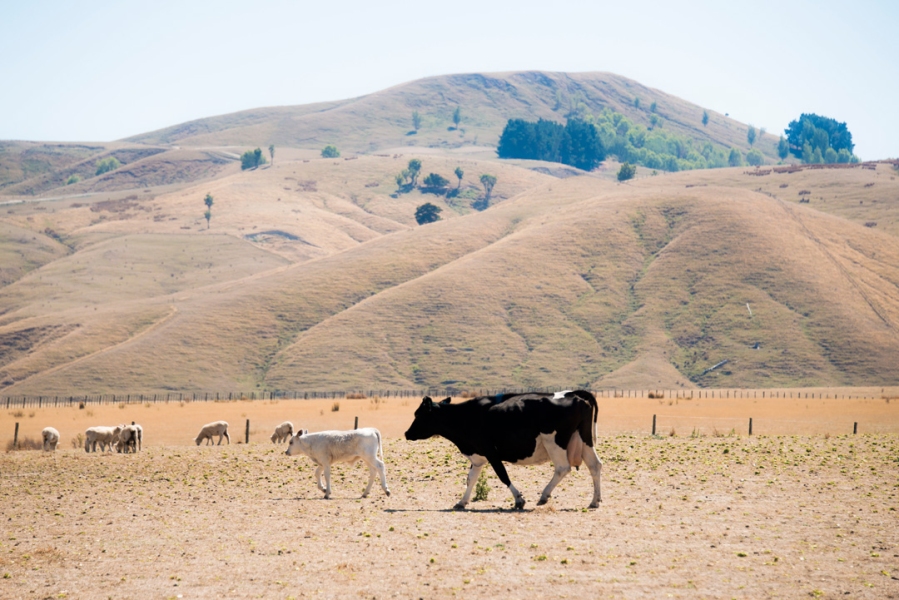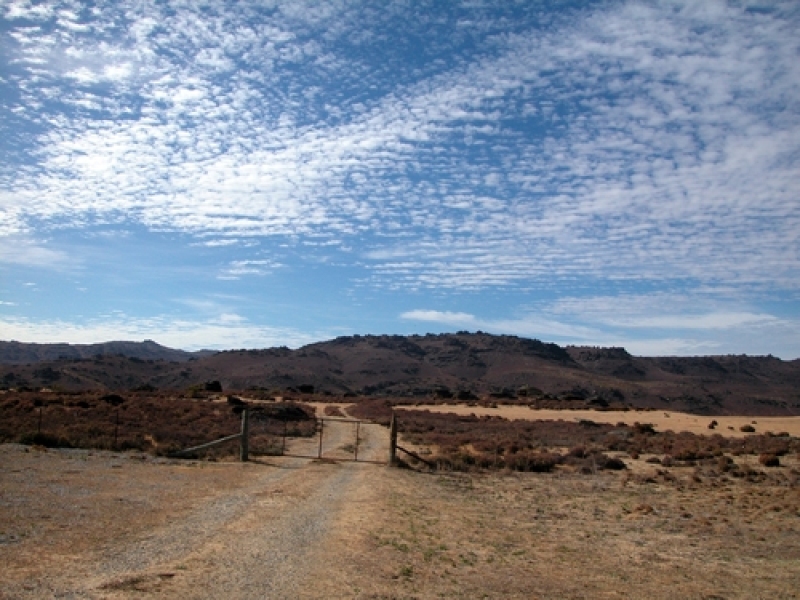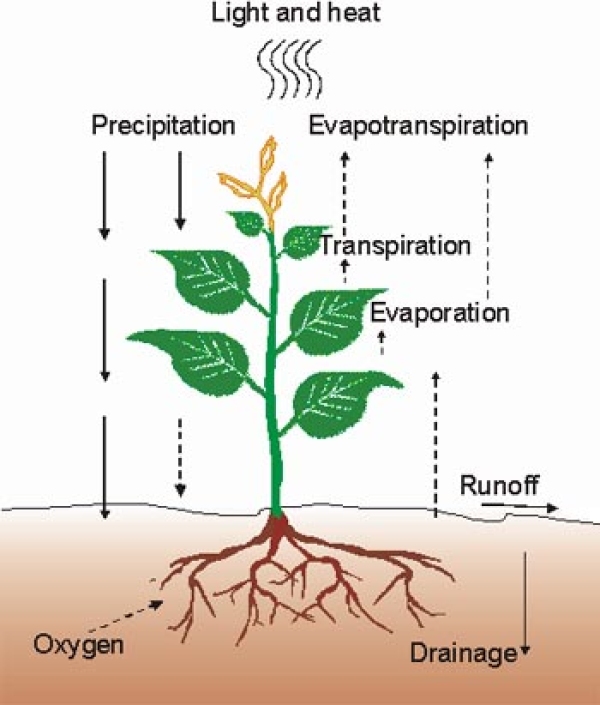What is a drought?
A drought is a sustained period of low rainfall so that soil moisture is insufficient for plant growth. Depending on the time of the year, it can take from two weeks to three months with insufficient rainfall before this criterion is met.
Where does the water go?
Water is lost from the soil by evaporation from the soil surface and by transpiration from the leaves of plants. The combination of these two factors is called evapotranspiration. Water is also lost as it drains through the soil beyond the reach of the plant roots.
Soil moisture depends on the balance between the water gained from rainfall and the moisture lost through evapotranspiration. The intensity of the rainfall, the number of rainfall events, temperature, sunshine, wind and the amount of water vapour already in the air are all factors that can affect this balance.
What are the impacts of drought?
The impacts of a drought can be economic, environmental or social. Farmers are affected by drought as crops shrivel up and there is not sufficient grass for animals to graze. Reduced income for farmers has a flow on effect to retailers and other service industries. Even when the soil moisture returns, the impacts on pastures, stock and farm finances remain. River flows, ground water and irrigation dams can take months to recover.
Drought may produce a severe water shortage and the risk of fire is increased. The production of hydroelectric power may be reduced. Damage to plant and animal species, lower water levels in lakes and rivers and soil erosion are examples of environmental impacts. Drought can have social impacts by affecting health and safety and reducing quality of life. Drought is one of the major reasons for malnutrition and famine in many parts of the world.
How are droughts predicted?
Scientists can predict the likelihood of a drought by careful monitoring of rainfall, river flow and soil moisture. NIWA has extensive rainfall records - some records go back to the late 1850s. This depth of information, along with historical information on El Niño and La Niña weather patterns, enables NIWA scientists to provide a comprehensive assessment of the likelihood of flood or drought in any given area of the country.
Farmers, horticulturists and resource planners can then make informed decisions about land use practices.
Related information
- Droughts
- New Zealand Drought Monitor
- Water & Atmosphere article 'In brief: Dry run'
- Water & Atmosphere article 'Dust bowled'



